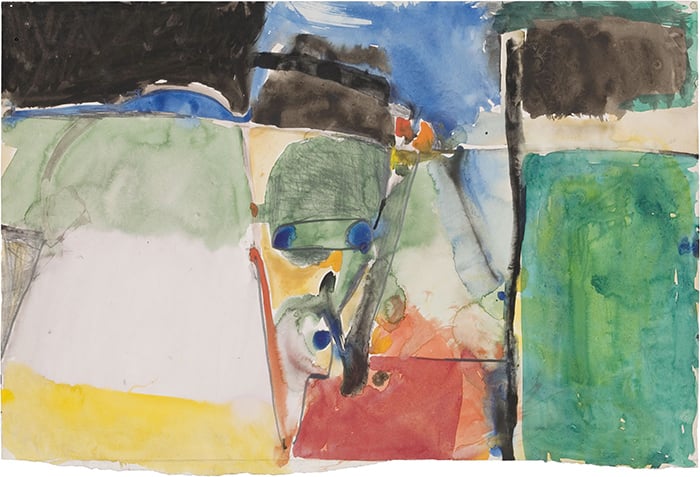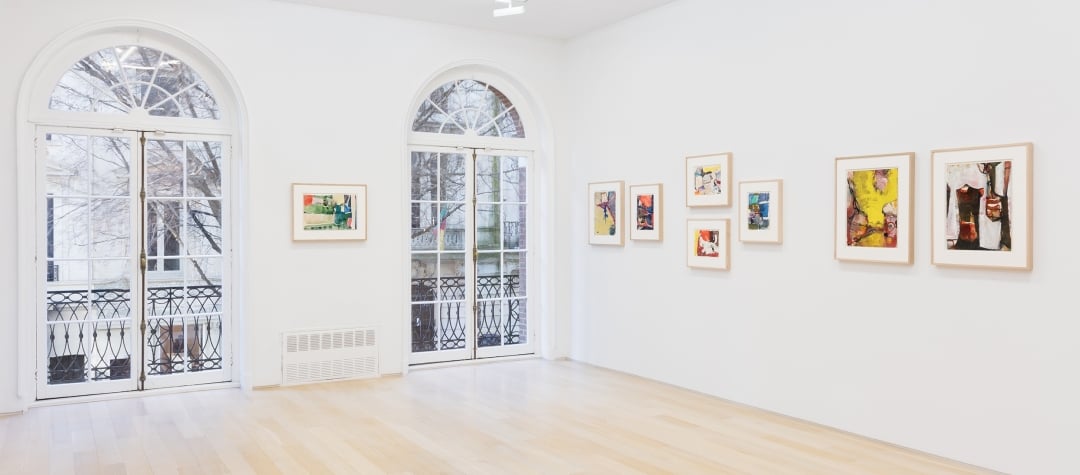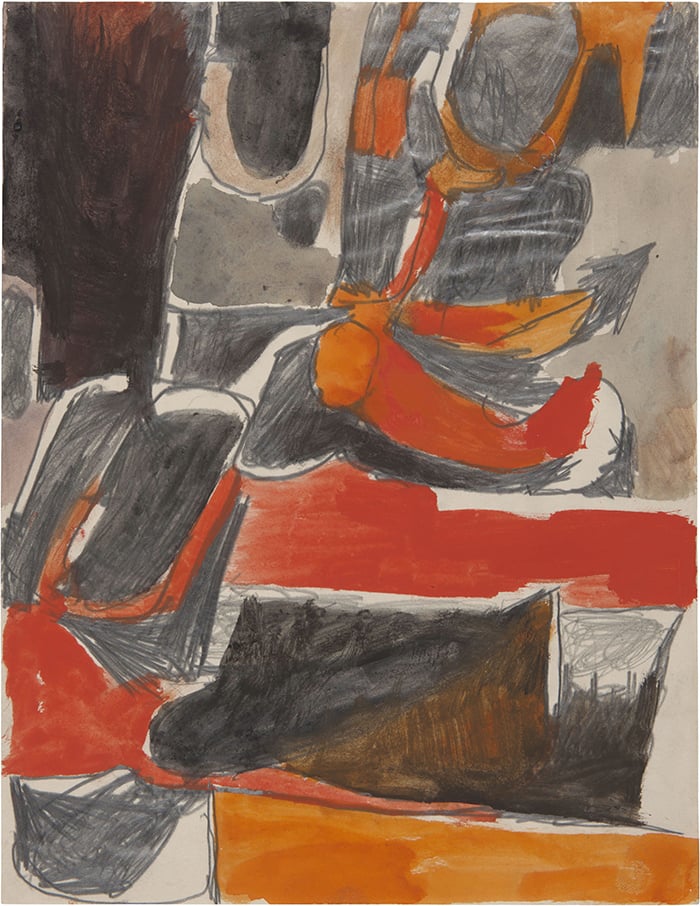Analysis
Rare Richard Diebenkorn Works Shine at Van Doren Waxter
After years in storage, brightly-colored paintings finally come to light.

Photo: courtesy Van Doren Waxter.
After years in storage, brightly-colored paintings finally come to light.

Sarah Cascone


“Richard Diebenkorn: Early Color Abstractions: 1949–1955” at Van Doren Waxter.
Photo: courtesy Van Doren Waxter.
“Albuquerque was, I guess, my period of reclusiveness,” said Richard Diebenkorn in a 1985 interview with Susan Larsen. “There is something that really is kind of overwhelming and most immediately apparent [in the Southwest].”
A key era in the painter’s career is currently on view at New York’s Van Doren Waxter gallery, where 30 never-before-seen works on paper are included in “Richard Diebenkorn: Early Color Abstractions: 1949–1955.”
These delicate watercolor and gouache works reflect the influence of the vast landscape of the western United States, even as Diebenkorn embraced the current vogue of Abstract Expressionism. “They’re fantastic, totally representative of the moment,” gallery co-owner John van Doren told artnet News in a private tour of the exhibition. “The quality of the color is so spectacular because they had never been in the light.”

Richard Diebenkorn, Untitled (circa 1952–53).
Photo: courtesy Van Doren Waxter.
The paintings mark an important stage in the artist’s development, as he left Sausalito, California, in 1949, and began studying for his graduate degree at the University of New Mexico in Albuquerque. The exhibition also covers his time Urbana, Illinois, where he moved in 1952, and his first years in Berkeley, California, where he settled later that year. Throughout his career, Diebenkorn was always inspired by the landscape—his best-known works, the abstract “Ocean Park” series, began when he moved to Santa Monica in 1966.
The artist’s daughter, Gretchen, who was a child when the paintings were created, told artnet News that she can tell the works from different cities apart because “there’s a difference of light, there’s a difference in the color of the surroundings.”
Van Doren pointed out one painting, from the Berkeley period. “You can absolutely see the horizon line creeping into it,” he said. “It was right after this moment that representational work became the thing he was really focused on. But the connection between those two things is so integrated.”

Richard Diebenkorn, Untitled (circa 1950–53).
Photo: courtesy Van Doren Waxter.
Indeed, for a work of abstract paintings, many of the pieces are highly suggestive of figurative forms, be it a snow-covered city street, or a simple still life. The longer you look, the more you think you begin to see.
It’s understandable, given that Diebenkorn was always thinking about both types of work. “There were representational drawings of some sort during his entire career, and there were abstractions during his entire career,” Gretchen explained. The small, simply framed works pack a powerful punch, a profusion of shape and color that draws the viewer in, demanding close attention. Diebenkorn’s compositions seem effortless, painted in free, easy strokes.
The works have been kept in storage since the artist’s death in 1993, thanks to the Richard Diebenkorn Foundation, which is selling them in order to fund the publication of the artist’s catalogue raisonné. It’s been a 21-year, four-volume, 2,500-page project that is finally reaching completion this spring.

Richard Diebenkorn, Untitled (circa 1952).
Photo: courtesy Van Doren Waxter.
“The board is trying to be extraordinarily careful to keep a core collection that is representative of Diebenkorn’s work,” foundation head Dick Grant told artnet News, admitting that parting with these painting was no easy decision. He estimates the foundation has some 3,000 works by the painter, in addition to perhaps 1,500–2,000 from Diebenkorn’s wife, Phyllis, who died in January 2015 and whose estate is still being settled.
The sale has one other benefit: “The different between seeing them lying in a drawer in storage and seeing them framed in a beautiful space is remarkable,” said Grant. “You see them in a whole different light.”
“Richard Diebenkorn: Early Color Abstractions 1949–1955” is on view at Van Doren Waxter, 23 East 73rd Street New York, January 15–March 5, 2016.